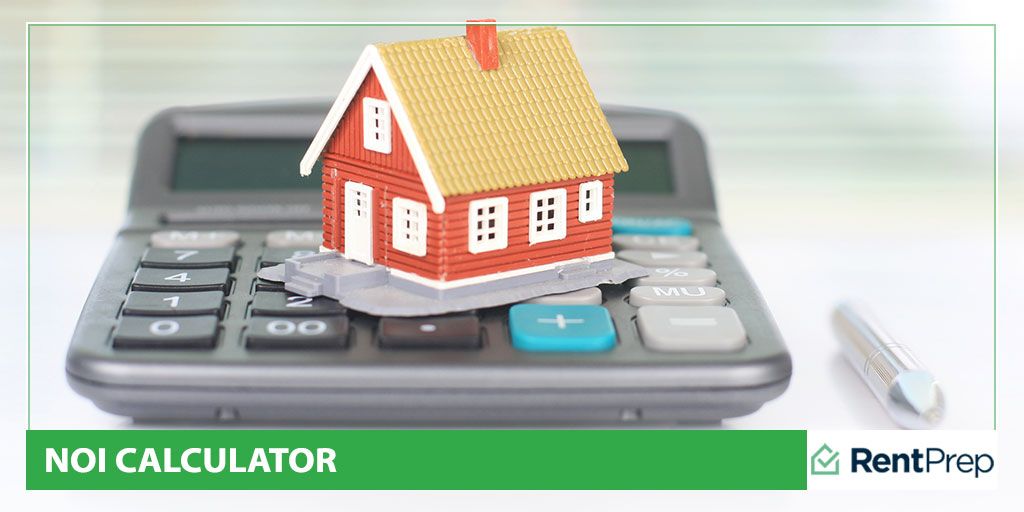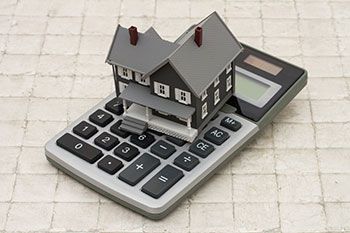
Whether you’re expanding your rental business or deciding which properties should be your focus moving forward, knowing how to calculate the income-producing value of your properties is essential. Landlords often use NOI calculations to help with these complex decisions.
Are you familiar with NOI and the value of a good NOI calculator?
NOI, also known as net operating income, is a valuable way of determining whether or not an income-producing property is a good investment. Real estate investors use it frequently in their business, and landlords like you can, too.
Without knowing how much income a property is producing or will produce, you can only guess what type of profit margins your business will see. That leaves a lot up to chance, and no successful investor wants much of their business to rely on chance.
Today, learn all about NOI, how it’s calculated, and why the NOI formula should be a key part of your investment planning.
Table Of Contents On How NOI Is Calculated:
Getting a grasp of NOI can seem complicated at first. With the correct information and formula, however, you’ll find that building this calculation into your business planning isn’t difficult at all. Learn along with us today:
- What Is NOI?
- Why Landlords Should Calculate NOI
- How To Calculate NOI
- Improving NOI By Improving Screening With RentPrep
- FAQs: Calculating NOI And Using NOI Calculators
- Calculating NOI Can Improve Your Business
What Is NOI?

Net operating income, often abbreviated as NOI, is a number that measures the profitability of a rental property.
This valuation method benefits landlords and other real estate investors who want to find an accurate value for rental properties. By subtracting the operating expenses from the property’s income, these professionals can discover how a property performs.
In practice, NOI is a way landlords can quickly make decisions about the future of their current and potential rental properties.
Why Landlords Should Calculate NOI
Now you know what NOI is, but why is calculating net operating income something that landlords like you should learn how to do?
It’s essential not only to learn how to calculate NOI but also why you should calculate it. Here are the primary reasons NOI numbers are valuable.
#1: Is A Purchase Worthwhile?
The primary reason NOI is used is to determine whether or not a property should be considered for investment. Calculating NOI shows your potential profitability. If a property has a very low NOI compared to similar rentals in the area, it’s likely not going to be the right fit for expanding your portfolio.
#2: Calculating Cash Flow
Another good reason to learn how to calculate NOI is so that you can use this number with other data to make better business decisions.
Some landlords learn how to calculate NOI, not to use it to make purchase decisions but instead to calculate NCF. NCF, also known as net cash flow, represents the difference between how much money comes into and flows out of a property in a certain time period.
Most often, a simple calculation for net cash flow is subtracting mortgage payments from NOI. Financing options like mortgages aren’t included in NOI calculations but need to be included in NCF. Some landlords prefer to use NCF to make their decisions, especially when mortgages can vary in investment value.
#3: Determining ROI
NOI can also be used to calculate capitalization rates, or return on investment (ROI). These rates, represented as a percentage, show the amount of revenue the property will generate compared to the cost of the property. These percentages are very easy to compare between properties.
How To Calculate NOI
The calculation for NOI is straightforward:
- NOI = total operating revenue – total necessary operating expenses
The numbers needed to calculate NOI, however, are less simple. Revenue and expenses both include many factors, and you will need to know how to determine what exactly to include in these categories. You also need to have access to the data. This is easier when you already own and operate the rental, but can be harder to do for properties you’re considering purchasing.
You need to calculate two categories to determine NOI: property revenue and property operating expenses.
Property Revenue
Generally speaking, revenue includes rental income and all other income generated at the property, such as income from parking fees, laundry machines, or other at-cost services. This number should be the sum of all income generated at the property.
Do not include any rental deposits you receive as part of the revenue. Deposits are not income as they will be returned if all lease terms are met.
Ensure you don’t forget anything, such as pet rent, pet fees, vending machine profits, or similar income. A property’s revenue is often more than just rental income.
Necessary Operating Expenses
Expenses include insurance, utilities, property taxes, necessary repairs, and any associated management fees. They may also include tenant screening and vacancy costs.
You do not need financial payment information such as your mortgage details for NOI. This is because mortgages vary from property to property, so you don’t want to include them. If you include mortgage details, NOI would not be as good for comparing properties.
Using An NOI Calculator
Many landlords find it easy to use an online NOI calculator or set up an NOI calculator in a spreadsheet. By having an NOI calculator ready to use, all you’ll need to do is input the required data. This will ensure that you don’t miss any vital information when calculating NOI.
Consider creating a spreadsheet that can be used for easy NOI calculation. Having this on hand will make this calculator more useful and thus more valuable to your business.
Improving NOI By Improving Screening With RentPrep

If the NOI at any of your properties isn’t meeting your standards, it’s time to address why the property isn’t bringing in enough cash.
Many landlords have a definite problem with their tenant screening process. Are you struggling with bad tenants or finding it hard to fill vacancies promptly? If so, you may find that your NOI will improve if you take the time to improve your tenant screening process.
Tenant screening is arguably the most important part of your rental business. Choosing tenants for your property must be done carefully, or you could find yourself with thousands of dollars in damages, court fees, or lost rent.
Here at RentPrep, we can help you improve tenant screening without wasting time. Our services, including different tenant screening packages, save time and get you accurate information to make informed tenant selections.
Don’t waste either time or money on tenant screening any longer. Improve NOI by improving your tenant screening practices.
FAQs: Calculating NOI And Using NOI Calculators
Here are some of the top questions when it comes to NOI and using a calculator to figure out the formula.
What is NOI?
Net operating income, often abbreviated as NOI, is a formula that gives investors and landlords a way to determine a property’s profitability. This calculation can be used on properties they are considering adding to their portfolio as well as on properties they already own.
NOI doesn’t factor in financing but instead looks specifically at the property and whether it can or cannot be profitable when factoring in everything needed to keep it running smoothly. NOI is just one of many calculations investors and landlords use when working out their business plans.
How do you calculate NOI for a rental property?
To calculate the net operating income (NOI) of a rental property, use this formula:
- Real estate revenue – operating expenses = NOI
Check out above sections of today’s article to learn more about what should be included when adding up revenue and expenses for a property. We’ve covered this in detail, and you may find that it’s not quite what you think.
What is a good NOI percentage in rental real estate?
Landlords often ask what NOI percentage they should be looking for, but NOI is not a percentage—it is a number. NOI is a figure that represents the income of a property after deducting the necessary operating expenses.
It’s hard to directly compare NOI to the property’s value unless it was paid for in cash. This is because finance plans will affect how much money actually becomes part of your business cash flow.
The higher the NOI in comparison to the property price, the better. Generally, operating incomes and margins should be above 15% in business when compared to the cost of investment. If you want to use a percentage to work out your business plans, this is the number you should use as a “good” marker.
Another way to utilize NOI to determine which properties perform best is to use a trend chart to compare NOI over time. This is particularly good for analyzing your current portfolio so you know where to continue investing time and where you may need to make changes.
Is property tax included in NOI?
Property taxes must be paid as part of the property’s operating expenses so that they will be included in most NOI calculations. On the other hand, income taxes are not part of the calculation, so they don’t need to be included. Only taxes that must be paid for the property to continue functioning as a rental should be included.
Are cash flow and NOI the same thing?
NOI, net operating income, is a number used to measure the profitability of a property. At the same time, cash flow is the amount of money a business generates during its normal operations. While the two numbers can be the same in some instances, they are not the same thing or calculated from the same formula.
It’s best to calculate cash flow and NOI separately as the goal of each calculator is different. Cash flow helps you understand how much money your business is bringing in that is free to use on growing the business and paying bills. NOI calculations show how profitable property is. Using both numbers for their intended purpose gives you a broader perspective on how to maintain or grow your business.
Should a vacancy be included in NOI?
Suppose you are running the calculation for a current property and know how many vacancies or average vacancies affect the property. In that case, you should include these as part of your regular operating expenses for the most accurate NOI.
You do not need to include vacancies in the calculation for NOI as long as you’re aware it is not included. This might be preferable when calculating NOI for a potential investment property where you do not yet know if vacancies will affect income. Typically, NOI can be considered the expected profit for times when the property is rented.
Therefore, you have to make a judgment call. If you know the area and know you can expect at least one period of vacancy every few years, you may want to find a way to work this into your financial planning. The key is that you are aware of whether or not the vacancies are included.
Calculating NOI Can Improve Your Business
NOI is a valuable metric to landlords and investors everywhere. Without determining the potential profitability of a property, there is no way to be sure you’re making the right decisions about properties, old or new.
Remember, it’s not hard to calculate NOI:
- Calculate the necessary operating expenses of the property
- Calculate the total revenue the property would generate
- Subtract the operating expenses from the total revenue
- The final number is the NOI of the property
Higher NOI numbers indicate better profitability, so when possible, you want to pursue properties that report a strong NOI. If you find this calculation frustrating, using a tool like an NOI calculator is an easy, simplified approach.
Your business will flourish if you continue to focus your investment plans and growth on properties with good profitability. NOI calculations will help you do just that, so don’t let this calculation slip away simply because it seems complex at first. Hopefully, you’ve already learned how easy it really is to determine so you can implement it in your business plans moving forward.

